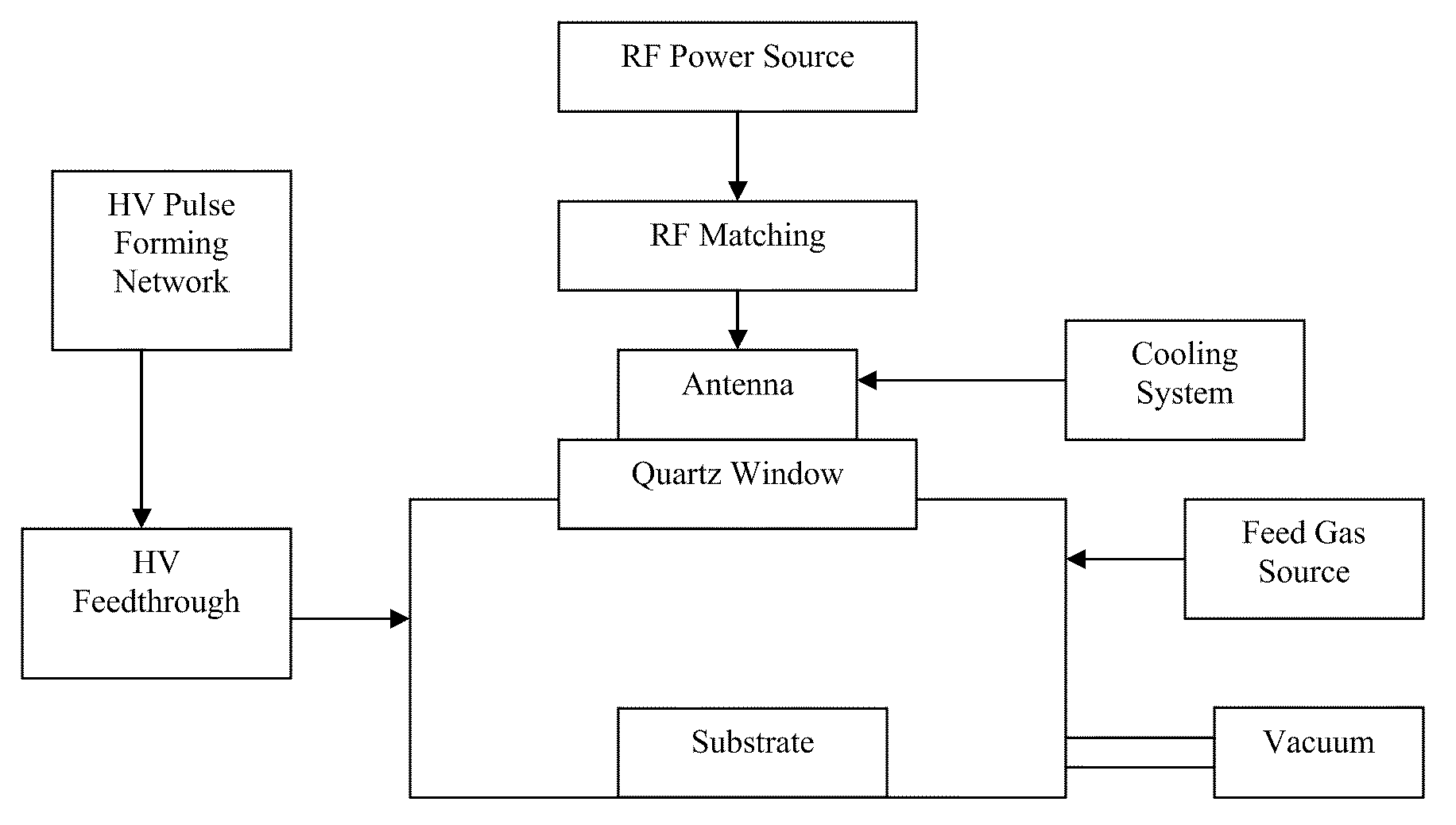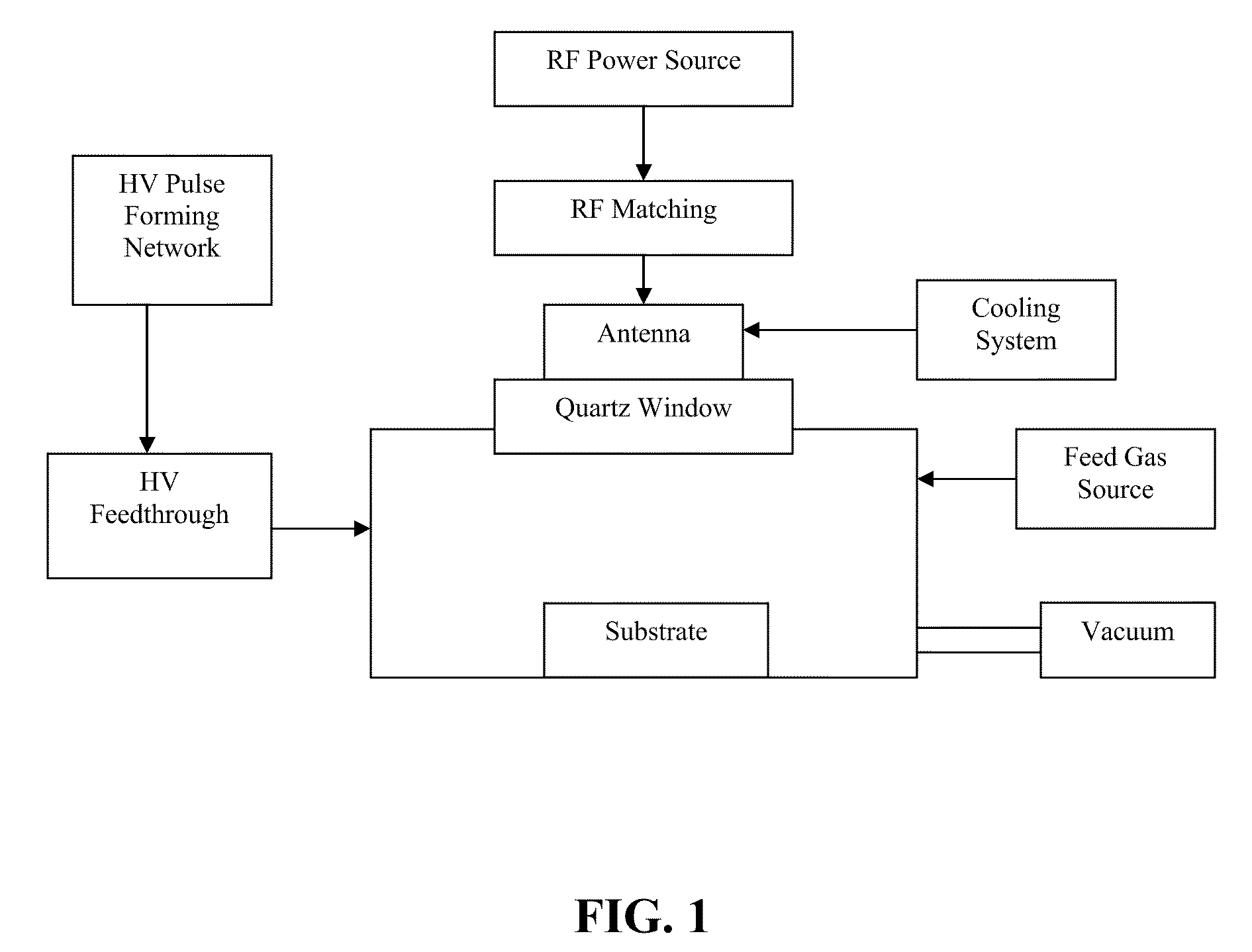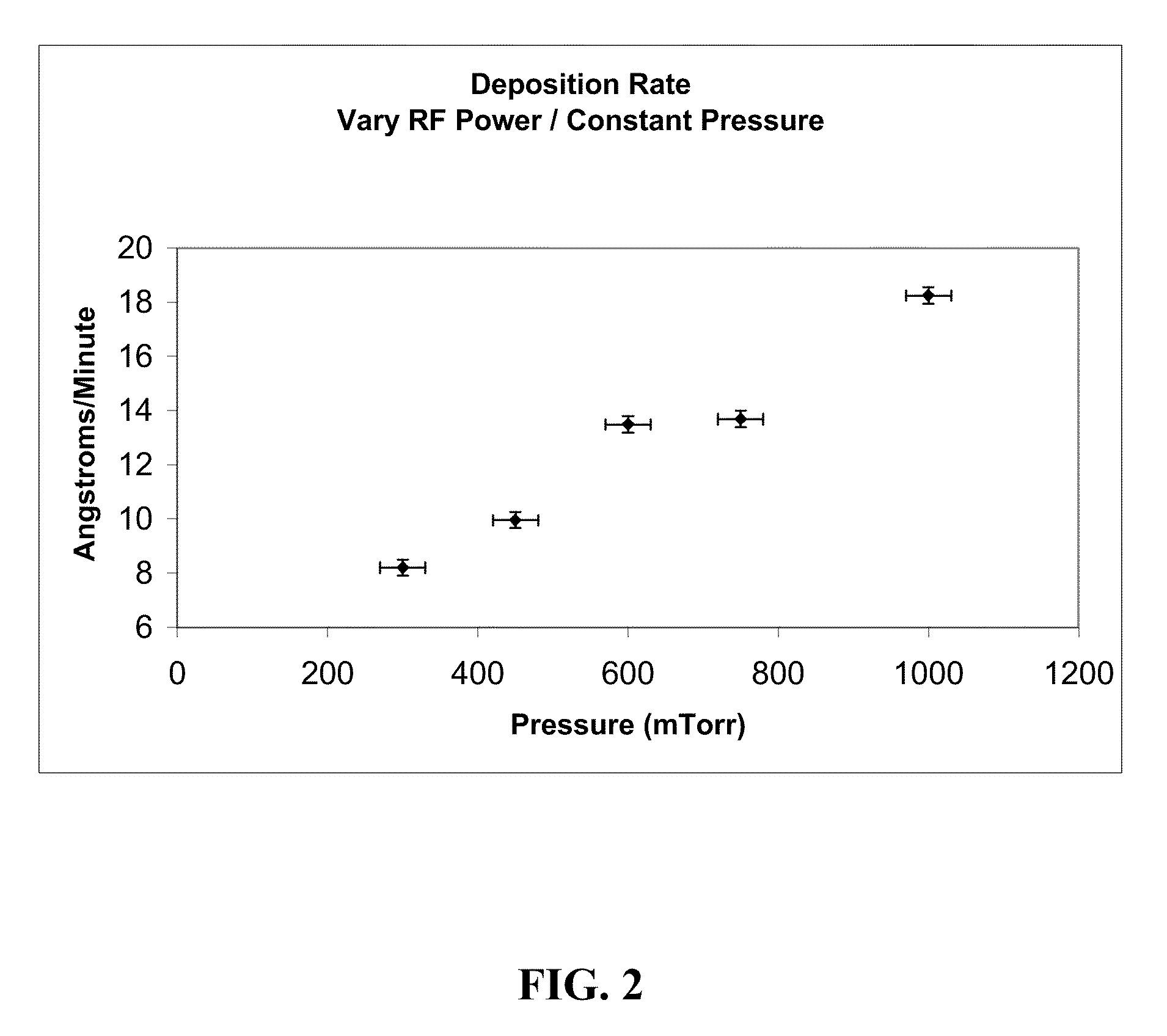Silicon Oxynitride Coating Compositions
a technology of oxynitride and coating composition, which is applied in the direction of vacuum evaporation coating, coating, lasers, etc., can solve the problems of limiting the operating voltage of dc-field photoelectron guns, emitted electron current, damage to electrode surfaces, etc., and achieves the effect of reducing costs and hazards, and low allowable total thermal budg
- Summary
- Abstract
- Description
- Claims
- Application Information
AI Technical Summary
Benefits of technology
Problems solved by technology
Method used
Image
Examples
example 1
[0044]A set of experiments was performed using 7 mm×7 mm silicon samples that were all cut from the same wafer. Using the General Procedure described above for reactive sputtering, the nitrogen plasma pressure was fixed at 1.7 mTorr while the RF-power was incrementally adjusted. Four silicon samples and two “masked” silicon samples were then coated for 4 hours at each of the following RF power levels: 300 W, 450 W, 600 W, 750 W, and 1 kW incident power, with less than 25 W reflected power in all cases.
[0045]The two masked silicon samples were then analyzed using profilometry to measure the step height, or thickness of the coating. Each sample was analyzed at three different locations, and their corresponding thickness values were averaged. The deposition rate was then calculated by dividing the average thickness by the total process time, namely 240 min. The four other samples were analyzed using FTIR to determine how much Si—N content was present in the silicon oxynitride film. The...
example 2
[0052]A set of experiments was performed using 7 mm×7 mm silicon samples that were all cut from the same wafer. Using the General Procedure described above, the RF-power was fixed at 750 W incident power while the nitrogen plasma pressure was incrementally varied. The reflected RF-power was kept below 25 W. Six samples, comprising four silicon samples and two masked silicon samples, were coated for 4 hours at each of the following nitrogen pressures: 1 mTorr, 1.7 mTorr, 2.5 mTorr, 3.3 mTorr, 4 mTorr, and 5 mTorr. It should be noted that greater pressure ranges can be achieved with different vacuum pumps known in the art; for example, the 16 cfm scroll pump used in the present example could be replaced by a larger, oil-lubricated rotary vane pump, or the 1000 l / s maglev turbo pump used in the present example could be replaced with a smaller turbo pump.
[0053]The two masked silicon samples were then analyzed using profilometry to measure the step height, or thickness of the coating. Ea...
example 3
[0057]Silicon oxynitride coatings were deposited onto 7 mm×7 mm silicon samples using the procedure of Example 1, with a fixed nitrogen pressure of 1.70 mtorr and 750 W incident RF power.
[0058]Atomic Composition—Auger Electron Spectroscopy. The atomic compositions of the silicon oxynitride layers created by the reactive sputtering deposition procedures were obtained using Auger Electron Spectroscopy (AES) with a cylindrical mirror electron energy analyzer having a fixed resolution of 0.6% of the peak energy. Depth profiles were obtained by rastering a 400-500 μm diameter, 3 keV argon ion beam to sputter a 2 mm by 2 mm surface area. The sputter rate was calibrated against that of silicon dioxide, and the relative sensitivity factor treated the silicon as an oxide. FIG. 8 shows the AES depth profile of the reactively sputtered silicon oxynitride films. A layer of silicon, oxygen, and nitrogen was deposited that is roughly 600 nm thick. The concentration of silicon was approximately 30...
PUM
| Property | Measurement | Unit |
|---|---|---|
| temperature | aaaaa | aaaaa |
| thickness | aaaaa | aaaaa |
| thickness | aaaaa | aaaaa |
Abstract
Description
Claims
Application Information
 Login to View More
Login to View More - R&D
- Intellectual Property
- Life Sciences
- Materials
- Tech Scout
- Unparalleled Data Quality
- Higher Quality Content
- 60% Fewer Hallucinations
Browse by: Latest US Patents, China's latest patents, Technical Efficacy Thesaurus, Application Domain, Technology Topic, Popular Technical Reports.
© 2025 PatSnap. All rights reserved.Legal|Privacy policy|Modern Slavery Act Transparency Statement|Sitemap|About US| Contact US: help@patsnap.com



